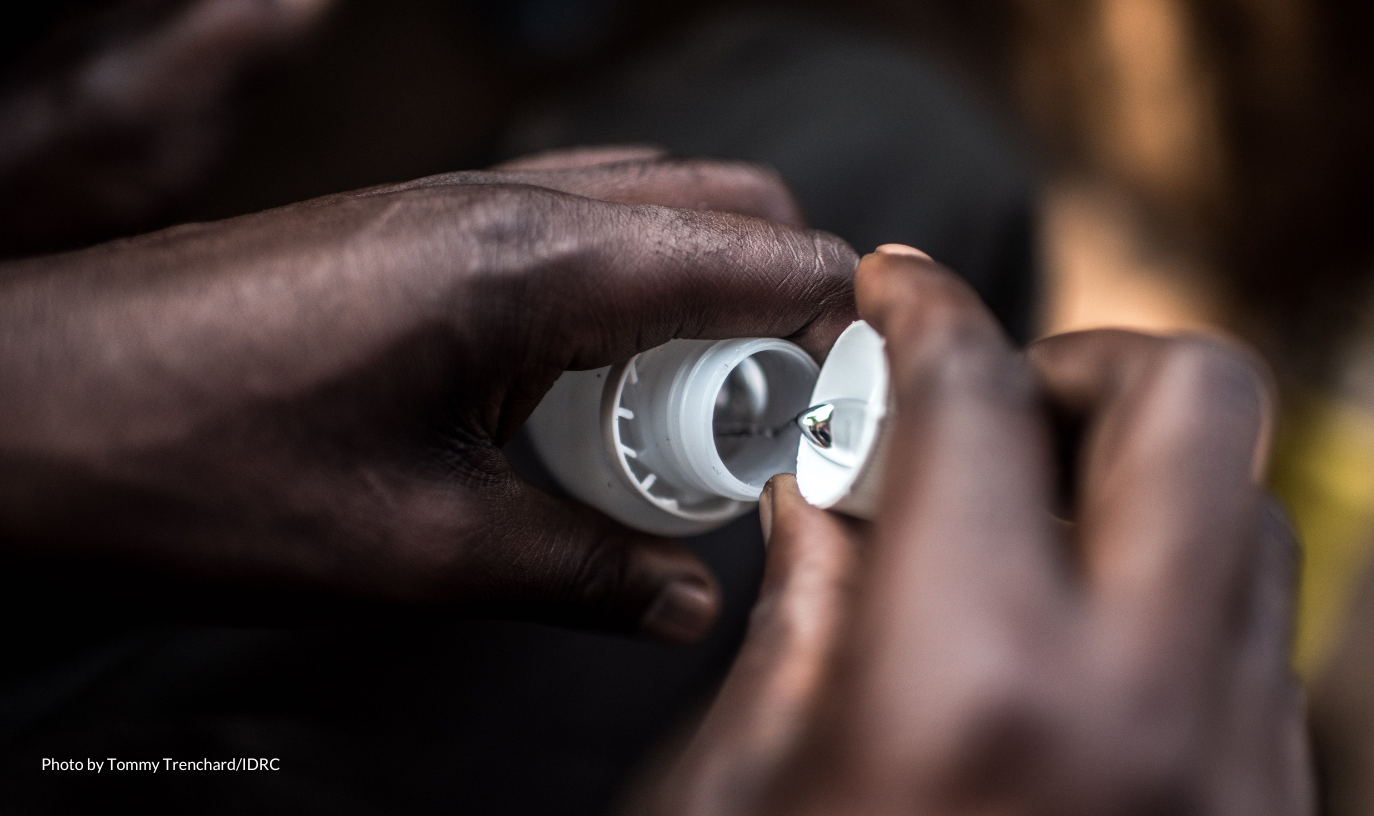In 2020, just before COVID-19 shut down many of the world’s borders, an IMPACT researcher had a front row seat to an illegal gold deal in Nairobi.
On the table was 35 kg of gold, being sold by two young Congolese men with ties to an artisanal gold mining cooperative in eastern Democratic Republic of Congo (DRC). The Nairobi trader had the upper hand in the negotiation. He pushed the price lower with each quibble about purity and the risks he would have to bear getting the gold to market.
The sale—what the trader called a “routine” deal—was finally agreed to at almost $1.1 million USD, far below the gold’s final market value.
The transaction highlighted the role Kenya—and Nairobi in particular—plays in the illicit gold trade of East Africa. Kenya’s role is often overshadowed by places like Kampala or Kigali, which have been documented as being the first springboards for illicit DRC gold on its way into the international market through the UAE.
Yet, Nairobi-based gold traders have a long history of sourcing from DRC and similar links to the UAE. A number of cases over the past five years—including an alleged 99.5 kg shipment of DRC gold transferred to Dubai via Nairobi under the blessing of a stolen ICGLR certificate in 2017—indicate that the capital city could be a significant passageway. More recently, a Middle Eastern diplomat suspected of being involved in a plot to free jailed Iranian terrorist suspects in Nairobi was linked to illicit gold from DRC and Ghana.
Once one adds gold to Kenya’s crime typology—including its proximity to Islamic terror groups; established wildlife smuggling; its role as host to numerous politically exposed individuals fleeing regional conflicts and accountability for their involvement in resource-related plunder; and the role it plays as a continental entry-point for hard narcotics like cocaine, crystal meth, and heroin—it’s clear policymakers, customs, and law enforcement officials need to pay more attention to the illicit gold trade.
The true extent of the trade in Kenya—with respect to gold originating both in Kenya and elsewhere—remains unknown. Some have estimated figures of illicit gold leaving Kenya as approximately 2.9 tons in 2018, worth over $100 million USD based on Kenyan imports declared by the UAE. Crime analysts and a gold trader based in Nairobi who spoke with IMPACT’s researcher believe these figures are a massive underestimate. Supporting the hypothesis that Kenya could be serving as a larger transit hub for illicit gold is a growing recognition that much of the production from South Sudan’s nascent yet gold rich artisanal mines is heading to Nairobi.
Where there’s gold, there’s mercury
Gold and mercury supply chains are often intertwined, and recent research has documented the extent to which this interconnectedness actually contributes to an increased use of mercury. Artisanal miners are often advanced money by traders to cover their basic needs while mining for gold, and they pay this debt back with a percentage of the gold they find. Faced with the pressure of having to meet their debt obligations to traders, many artisanal miners use mercury in their mining as it is often the quickest, cheapest, most efficient, and most readily available option. This option often also happens to be provided by the same traders buying their gold.
Kenya serves as a key transport hub for mercury used in east African artisanal mines in Uganda, DRC, Tanzania, and South Sudan. Kenya’s official imports of mercury far exceed its own internal artisanal gold production capacity, while other countries—like Uganda and Tanzania—import far less than what is needed for theirs. Official statistics on mercury being imported into Kenya have fluctuated significantly over the past decade, with as much as 49 tons of mercury imports recorded in 2013 compared to only 6 tons in 2019. That is in addition to illicit and undocumented mercury entering through Kenya and making its way to other artisanal gold producing countries—such as the DRC, Uganda, and Tanzania.
Holistic Approaches to Tackling Illicit Supply Chains
Disrupting illicit networks is a complex task, given they often operate in the shadows and can span numerous countries across the globe. Furthermore, identifying effective approaches that target nefarious actors without bringing harm to vulnerable people—such as impoverished artisanal miners—can be a challenge.
Enforcement or regulatory measures in one country or sector may lead to short-term gains, but in the long-term could result merely in shifting illicit networks from one place or commodity to another. Illicit networks have proven themselves adaptable, especially in places with little to no enforcement or penalty.
Identifying networks and convergence points of illicit supply chains, or the intersections among methods, materials, routes, locations, and actors, may provide greater insights into how systems enable illicit networks and how those networks may be impacted by potential disruptions or interventions. Dismantling these enabling factors at regional or global levels may have a larger impact on combating the use of gold, mercury, and other commodities to further organized crime, terrorist organizations, and armed groups.
With the Government of Kenya’s latest investments in its small-scale domestic gold sector, including its own refining capabilities, the time is right to tackle the drivers of illicit trade. This would help eliminate the type of backroom deal witnessed by IMPACT, bringing important revenues to the country and potentially contributing to greater security at both national and regional levels.
IMPACT is working together with the Colorado School of Mines and I.R. Consilium, to explore this pathway to disrupting illicit supply chain networks. Our new project, Understanding and Disrupting Key Convergence Nodes of the Illicit Gold and Mercury Supply Chains in Latin America and Africa, will contribute to a better understanding of illicit supply chains and the ability to detect, disrupt, and disable them through an examination and comparison of key convergence nodes in the global supply chains for illicit gold and mercury in Latin America and Africa, with a focus on Peru and Kenya. The five year project is funded by the National Science Foundation (NSF).

